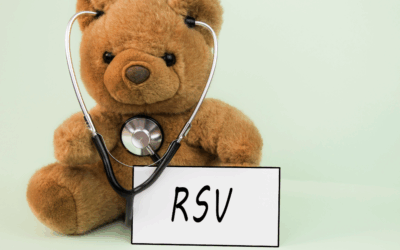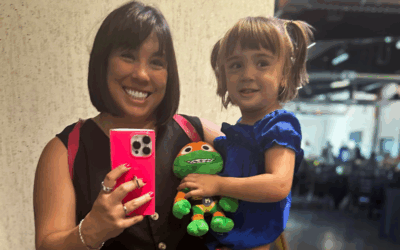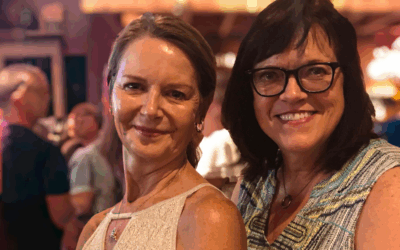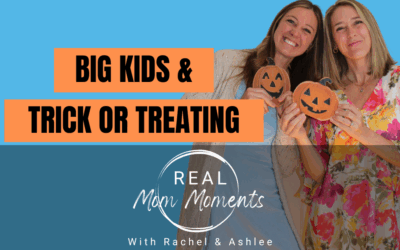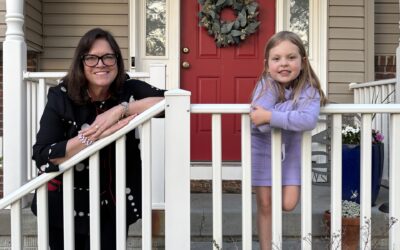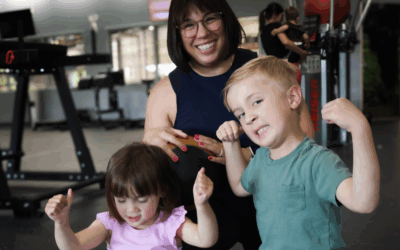Every winter, we brace ourselves for the impact of cold and flu season. Clinics fill with children and infants with runny noses, coughs and congestion. Hospitals have children admitted for dehydration, vomiting or difficult breathing – among other problems. For some...
Pregnancy & Babies
The birth of your baby is one of the most exciting times in your life. From the happiness of finding out you’re pregnant, to the pure joy you experience holding your baby for the first time; we’re here to provide you with helpful information and resources every step of the way.
Recent Posts About Pregnancy & Babies
Permission to Not Love Every Moment of the Holidays
Matching pajamas. A perfectly set table. A gorgeous Christmas tree. Hot chocolate in holiday mugs. Smiling kids looking at the camera. Presents wrapped in coordinating paper. That’s the picture social media paints of the “perfect” holiday season. But behind every one...
Daily Life in Retirement: Finding Joy, Movement and Inspiration
I retired February 3, 2022, and left for a two-week trip on February 13. My family hosted a retirement reception for me on March 25. On March 26 I woke up and realized there were no more celebrations, this was my life now. It was up to me to create a new road map for...
Is Tylenol Safe During Pregnancy?
If you’re pregnant and have reached for Tylenol (commonly known as acetaminophen) to ease a headache or lower a fever, you’re not alone. More than half of pregnant women use acetaminophen at some point during pregnancy. My wife, the mother of our nine children, used...
Big Kids & Trick-or-Treating
Welcome to Real Mom Moments with Rachel and Ashlee. More Real Mom Moments Raise Your Hand If... Skills of Independent Play Appreciating the Mess Your Attitude Matters Critical Mom Eye You Can Re-Do That Slowing Down Prepping Kids for What's Ahead "I'm Doing my Best...
Pelvic Floor Therapy: The Best Thing I’ve Done For My Mom Bod
When I first shared about my pelvic floor journey, I was just beginning to understand what was actually going on with my body. I’m a mom of two littles, Max (5) and Zoey (2), and like so many women, I had accepted that pain and discomfort from the pelvic floor was...
Parenting Never Ends, It Just Changes
As with every family, challenges arise. Ours is no exception. Actually, the Beans family might hold the record! From birth through infancy, parents work to identify these challenges and find solutions. As our babies become toddlers, the expectations shift a bit. ...
AI is not the Magic Pill for Therapy
Artificial Intelligence (AI) appears to have been integrated into many aspects of everyday life. “Alexa” turning on your lights and music in your home and “Siri” making a telephone call for you or giving you driving directions are now common concepts for most...
My Pelvic Floor Therapy Journey Part 1: “Peezing” is Normal, Right?
This is a personal account of my pelvic floor therapy journey and – spoiler alert – it changed my life. I’m a mom of two littles, Max (5) and Zoey (2). While I had c-sections with both of them, my pelvic floor was still hugely impacted by pregnancy. That’s something I...
Being “Neighborly” Looks Different, But Still Matters
The word “neighborly” keeps popping up in conversations this summer. It’s a word that is not commonly used these days. My parents and grandparents were more apt to use this word than my children and grandchildren. I feel like I’m in the middle – growing up, hearing it...
Is It ADHD? How to Recognize Attention Deficit Hyperactivity Disorder in Your Child
Attention-deficit/hyperactivity disorder, also called ADHD, is a long-term condition that affects millions of children. It can continue into adulthood. ADHD includes a number of ongoing problems. These can include having a hard time paying attention, being hyperactive...
Little Ears, Big Lessons: How to Help Kids Build a Healthy Body Image
The other day, my five-year-old Max said, “I need some protein so I can have big muscles.” I couldn’t help but laugh because I knew exactly where he heard that from – me. As a personal trainer, I focus on hitting my daily protein goals to build muscle and support a...
Childbirth & Parenting Classes
We’re here to help you and your family prepare, not only for the birth but also for life after baby. Bryan offers a range of classes and events for expecting parents and family members.
Find a Doctor for Baby & You
Whether you’re pregnant or thinking about it, one of your first big decisions is choosing a doctor. Another important decision is choosing a doctor for your baby; you will want to do this before your baby is born.
Tour the Bryan Family Birthplace
Sign up for our pregnancy newsletter!
Hospital Packing List
Be prepared for your big day with our hospital bag packing list for you, your baby and support person.
Preregister Your Birth
Tour the Bryan Family Birthplace


